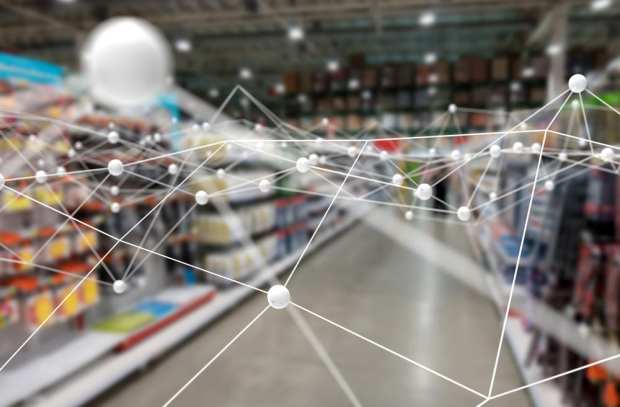Retailers Are Getting Smarter About Artificial Intelligence

As artificial intelligence (AI) moves from theory to reality – a slow and uneven effort, but a real trend – retailers are starting to experiment with the technology. The work to craft AI-powered commerce tools comes as the technology is making initial inroads into financial services, raising the potential of one day having combined AI payments and retail experiences.
That’s the future. What’s happening now pretty much boils down to lab experimentation, though the nature of those efforts does provide hints at what is to come for retail-focused artificial intelligence.
For instance, Walmart recently announced it was piloting in-store AI tech, via the opening of the chain’s Intelligent Retail Lab at a Long Island Neighborhood Market grocery store location. Through the digital efforts, ceiling cameras and shelf sensors will enable workers to fix problems and restock items efficiently. The technology will detect when shopping carts run low, when spills occur and when shelves have to be restocked. In one specific example, the cameras can even determine the ripeness of bananas. Workers can be notified by a phone alert when items need replaced.
Walmart’s Intelligent Retail Lab CEO and Jet.com Co-founder Mike Hanrahan told a reporter that “we really like to think of this store as an artificial intelligence factory, a place where we are building these products, experiences, where we are testing and learning.” He also noted that the cameras are set to mostly home in on shelves and products. (Cameras do not, say, track customer movements or recognize faces.) And sensors have information about what is in the back of shelves, which can provide more data to stores.
As PYMNTS research has documented, artificial intelligence and machine learning are blurring the divide between online and in-store shopping, and – ironically enough – bringing an all-new human element into retail. This is happening at a time when retailers are working to create lucrative consumer experiences to stand out from their competitors and to gain increased loyalty from consumers, especially younger ones such as millennials.
More specifically, by incorporating visual recognition technology and artificial intelligence into their business models, retailers such Neiman Marcus, IKEA, H&M, west elm and more are leveraging mobile devices and AI to provide advanced customer services. Those services include visual searches, hyper-personalization and seamless omnichannel functionality – all to weave together online and brick-and-mortar to enhance the consumer experience.
In the wake of this “deep-learning” revolution in the retail industry, merchants are gathering and analyzing their customers’ online activities, purchasing histories and other data points to hyper-customize their customer service features across digital and brick-and-mortar channels.
Payments are also playing a role in retail AI efforts and goals. From 7-Eleven to H&M, retailers are adopting digital payments and artificial intelligence technology to bring more convenient experiences to customers. These are just some of the ways merchants are evolving to meet the commerce and payments needs of the modern-day connected consumer.
In fact, PYMNTS research has found that the share of customer interactions projected to be handled by AI in 2023 is 80 percent.
Take Adidas as another example of that trend. The company teamed up with AI platform provider Findmine for product recommendations. By using AI technology, the sportswear brand was able to offer suggestions to online shoppers. In the past, Adidas merchants would have to manually put together outfits for the “Complete the Look” feature, which could take 20 minutes – and 27 steps – to finish. With the rollout of the new feature, however, Adidas has seen a 95 percent decrease in the time merchandisers spend on the process. At the same time, the company has noted that the number of items featured in the outfits spiked by 960 percent.
Artificial intelligence still has a ways to go in retail, but these recent developments show the speed at which progress is happening – and how that progress could open up new marketing, sales and loyalty options for merchants.
